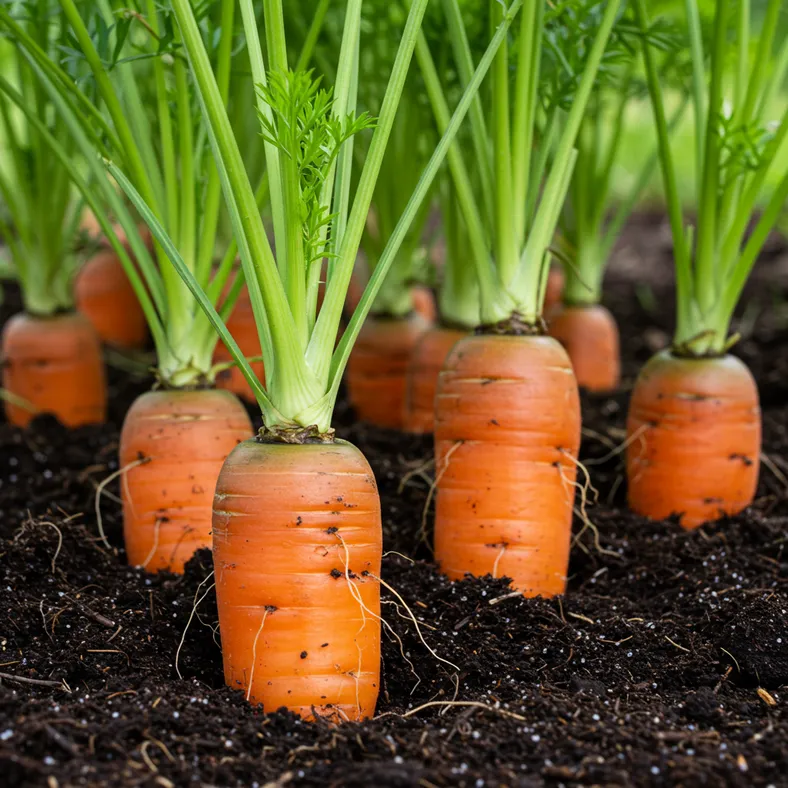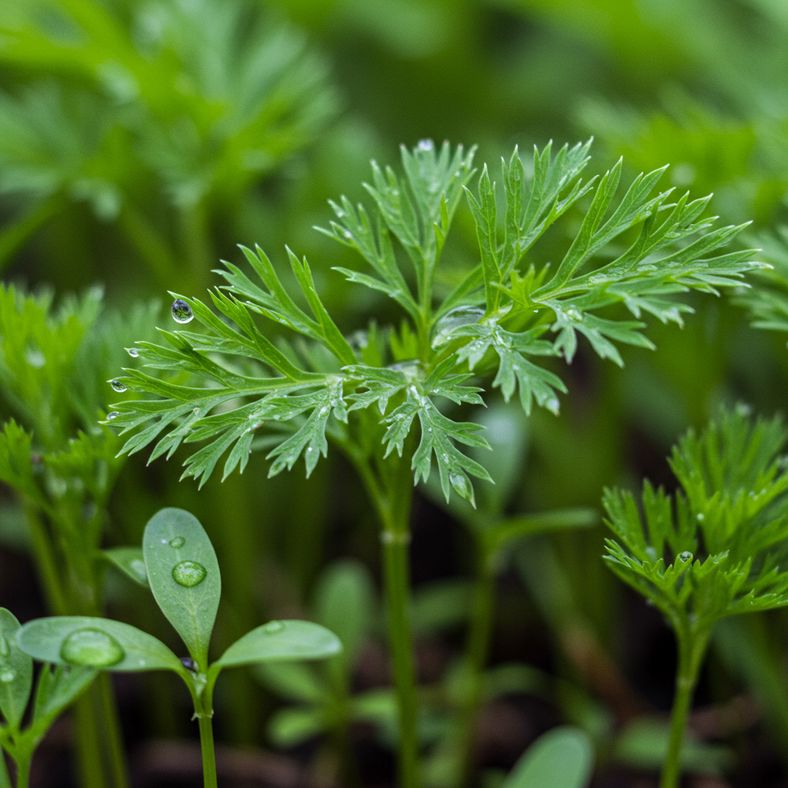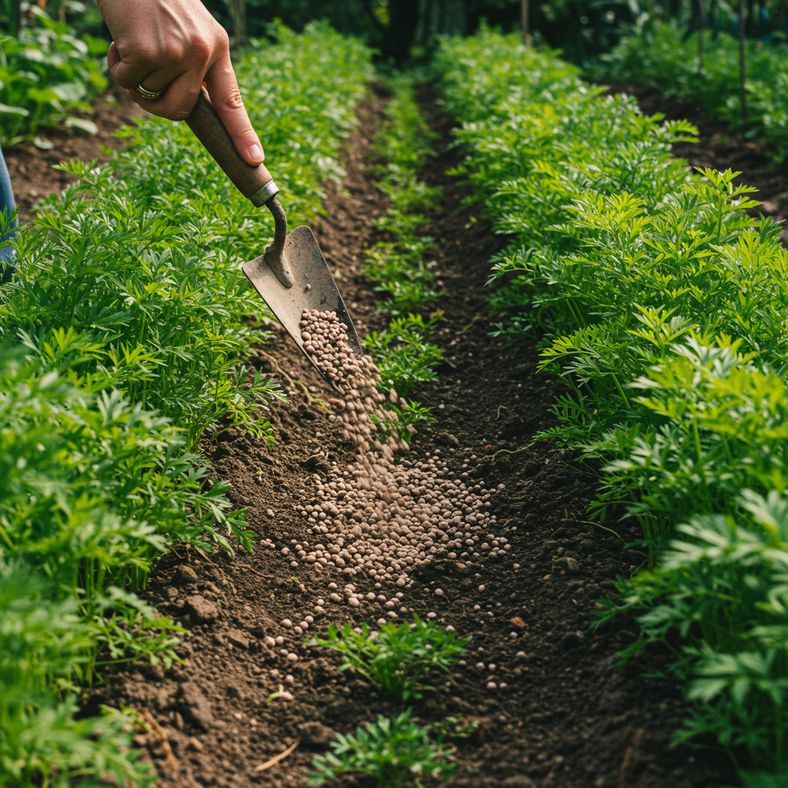How to Grow Carrots: Complete Guide to Growing Sweet, Flavorful Carrots in Your Garden
Discover the secrets to growing perfect carrots at home! This complete guide covers everything from soil preparation and planting to pest management and harvesting for the sweetest, most flavorful carrots you've ever tasted.

Nothing compares to the sweet, earthy flavor of a fresh carrot pulled straight from your garden. While grocery store carrots are convenient, homegrown carrots offer superior taste and the satisfaction of growing your own food. Growing carrots successfully requires attention to detail, but with the right techniques, you can enjoy a bountiful harvest of these nutritious root vegetables.
Whether you're a beginner gardener or looking to improve your carrot-growing skills, this comprehensive guide will walk you through everything you need to know to grow perfect carrots in your garden.
Where, When & How to Plant Carrots

Timing is crucial for successful carrot cultivation. You have two main planting windows:
- Spring planting: Sow seeds 2-3 weeks before the last frost date for an early summer harvest
- Fall planting: Plant 10 weeks before the first frost date for sweeter, cold-enhanced carrots
Carrots prefer cooler growing conditions with optimal soil temperatures between 45-85°F for germination, though soil should remain at 70°F or cooler as they grow.
Soil Preparation
Proper soil preparation is the most critical step for growing straight, healthy carrots:
- Work the soil deeply weeks before planting
- Add well-rotted shredded leaves and compost
- Remove all stones, pebbles, and debris that could obstruct root growth
- Ensure soil pH is between 6.0-6.8
- Choose loose, fertile, well-draining soil
Planting Technique
Since carrots have taproots, they must be direct sown and cannot be transplanted:
- Sow seeds 1/4 inch deep and 1 inch apart
- Space rows 12-18 inches apart
- Consider using pelletized seeds for easier handling
- Plant in full sun to light shade
Carrot Varieties

Garden carrots offer much more variety than the standard orange carrots found in stores. Here are some excellent varieties to consider:
Quick-Maturing Varieties
- YaYa (60 days): Fast-maturing orange variety with 6-inch barrel-shaped roots, perfect for warm regions
- Atlas (70 days): Small, rounded variety ideal for poor soil conditions, producing 1.5-2 inch diameter roots
Standard Varieties
- Danvers (65-75 days): Orange heirloom variety that tolerates heavy soil, growing 6-8 inches long
- Bolero (75 days): Sweet variety with disease resistance, producing 7-8 inch tapered roots
- Imperator (70 days): All-America Selections winner with classic carrot shape
Colorful Varieties
- Dragon (70-90 days): Purple-skinned with orange flesh, containing high lycopene levels
- Yellow Moon (80 days): Light yellow variety with 6-7 inch roots
When growing your own carrots, you can choose from white, yellow, red, and deep purple varieties in addition to traditional orange.
Watering Carrots

Consistent moisture is essential for successful carrot germination and growth:
Germination Stage
- Keep soil consistently moist during the 5-21 day germination period
- Use burlap fabric or old coffee sacks to cover seeds and retain moisture
- Water gently to avoid disturbing seeds
Established Plants
- Provide 1 inch of water per week once seedlings are established
- Increase to 2 inches per week when carrots reach halfway to maturity
- Water deeply to encourage strong taproot development
- Maintain consistent moisture to prevent stress and bolting
Pro tip: The fabric covering method helps maintain consistent soil moisture while protecting seeds from direct sun exposure.
Fertilizing Carrots

Proper fertilization promotes healthy root development without excessive foliage growth:
Key Fertilizing Principles
- Avoid excess nitrogen: Too much nitrogen causes excessive top growth at the expense of root development
- Limit phosphorus: Excess phosphorus can cause roots to split or form side shoots
- Use organic fertilizers: They provide gentle, sustained nutrition
Application Schedule
- Wait until carrot greens reach 4 inches tall before fertilizing
- Apply fertilizer between rows (side dressing method)
- Choose organic fertilizers with moderate nitrogen and little to no phosphorus
- Avoid over-fertilization which can lead to forked or hairy roots
Carrot Pests & Diseases

Prevention is key to managing carrot pests and diseases. Here are the most common issues and solutions:
Preventive Measures
- Install floating row covers from germination to harvest
- Practice crop rotation
- Control weeds that host pests and diseases
- Clear garden debris in fall
Common Pests
- Carrot Rust Fly: Cream-colored maggots that tunnel through roots. Plant and harvest early to avoid peak egg-laying periods
- Carrot Weevil: Beetle affecting carrots, parsley, and celery. Use beneficial nematodes for control
- Flea Beetles: Create small holes in foliage. Use row covers or plant radish trap crops
- Leafhoppers: Spread diseases while feeding. Controlled with row covers
- Armyworms: Moth larvae that eat carrot greens. Handpick or use Bt organic control
- Wireworms: Click beetle larvae in soil. Turn soil before planting to expose them to birds
Disease Management
- Root-knot Nematodes: Microscopic worms causing galls. Practice 3-4 year crop rotation
- Black Canker: Causes black, purple, or brown lesions on roots and rust-colored spots on foliage
Harvesting Carrots

Proper harvesting timing and technique ensure the best flavor and storage life:
When to Harvest
- Harvest within 3 weeks of maturity date
- Fall carrots become sweeter after experiencing frost
- Cold temperatures cause carrots to store energy as sugars
- Check size by gently brushing soil away from carrot shoulders
Harvesting Technique
- Pull carrots by their tops if soil is loose
- If carrots break, loosen soil with a garden fork first
- Cut top growth to 1 inch from the root after harvest
- Handle carefully to avoid bruising
Storage
- Store in refrigerator for up to 2 weeks
- For best flavor, consume as soon as possible after harvest
- Can be left in ground through winter using cold frames
- Remove any damaged carrots before storage
The reward of harvesting your own carrots is the incredible sweetness and crisp texture that store-bought carrots simply cannot match.